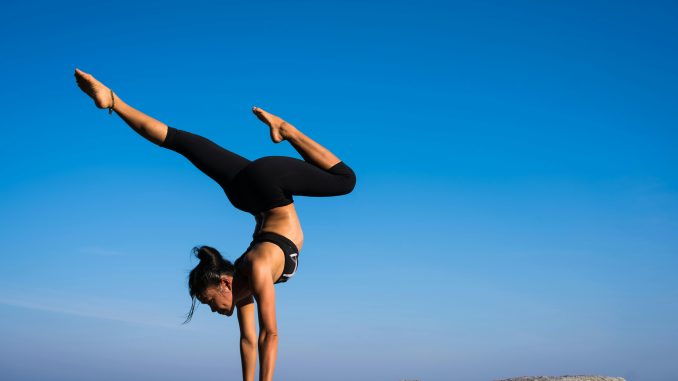
🧘♀️ Can Yoga Really Help with Arthritis? Here’s What I Found Out
Let’s talk about something that doesn’t get enough love: arthritis. If you live with it, you know it’s more than just sore joints. It can mess with your sleep, your mood, and even your confidence to do the everyday things you used to love.
Now, I’ll be honest—I used to think yoga was only for super-flexible people doing handstands by the beach. But after seeing people (including some close to me) use yoga to manage their arthritis pain, I got curious. So I did some digging—and wow. There’s actual science backing this up.
If you’re dealing with stiff joints, chronic pain, or just want to prevent arthritis from creeping in as you get older, you might want to give yoga a real shot.
🦴 So… What Is Arthritis, Exactly?
Quick refresher: arthritis isn’t just one condition. It’s actually a catch-all term for over 100 issues that cause joint pain, stiffness, and inflammation. The most common types?
- Osteoarthritis (OA): Basically wear-and-tear on the joints over time.
- Rheumatoid arthritis (RA): An autoimmune condition where your body attacks your own joints (not fun).
Regardless of the type, arthritis can make even small movements feel like a big deal. But here’s where yoga comes in.
🧘♂️ Yoga + Arthritis = Relief? The Research Says Yes
I’m not just going off vibes here. There are real studies showing that yoga can help with arthritis in some seriously meaningful ways.
1. It Loosens You Up (Literally)
One study published in the Journal of Rheumatology followed people with both OA and RA who practiced yoga for 8 weeks. The results? Less stiffness. Better flexibility. Easier time walking and moving. People even said they felt more capable in their day-to-day lives.
✅ Bottom line: Gentle movement keeps joints from locking up. Think of it as oiling a squeaky hinge.
2. It Helps With Pain (By Calming Your Whole System)
Chronic inflammation = pain. And yoga? It’s basically the opposite of inflammation. It slows your breathing, calms your nervous system, and—this is big—actually lowers stress hormones and inflammatory markers in your body.
A 2017 study even found that long-term yoga lovers had lower levels of C-reactive protein (a marker of inflammation).
✅ Bottom line: Yoga helps your body chill, which can mean less pain and fewer flare-ups.
3. It’s Good for Your Mood (Which Impacts Your Pain, Too)Pain can make you feel frustrated, anxious, and down. And honestly? That emotional stress can make your physical pain even worse.
Yoga weaves in mindfulness and deep breathing, which help soothe anxiety and lift your mood. One review even showed that people with arthritis who did yoga had less depression and anxiety overall.
✅ Bottom line: Feeling better emotionally makes it easier to cope physically.
4. You’ll Move Better, Fall Less
If you’ve ever felt unsure on your feet because of stiff knees or achy hips, yoga can help with balance and body awareness. Even gentle poses build stability and confidence. That means fewer falls and injuries—huge if you’re living with arthritis.
🤔 Why Does Yoga Work So Well for This?
Great question. Here’s what’s likely happening behind the scenes:
- You build strength in muscles that support your joints
- You improve flexibility and joint lubrication
- You calm the stress-response system that can make pain worse
- You move more mindfully, reducing strain and inflammation
🧘♀️ Okay, But What Kind of Yoga Is Safe
Good news: You don’t need to be bendy or athletic to start. In fact, some of the best styles for arthritis are super gentle:
- Hatha Yoga: Slow and simple postures
- Restorative Yoga: Deep relaxation with props like pillows and blankets
- Chair Yoga: Perfect if getting up and down is tricky
Here are a few safe poses to try (even at home):
- Cat-Cow Stretch: Loosens up the spine
- Bridge Pose: Strengthens hips and lower back
- Warrior II: Builds strength without pressure on joints
- Seated Forward Fold (with support): Gently stretches the back of your legs
👉 Hot tip: Use blocks, cushions, or even a chair to support your body. No one’s handing out medals for pushing through pain.
⚠️ One Thing to Keep in Mind
If you’re in a flare-up, recovering from joint surgery, or have a more severe form of arthritis, check in with your doctor or a physical therapist before starting anything new. The goal here is gentle, not extreme.
💬 Final Thoughts: It’s Not a Cure—But It’s a Game-Changer
Here’s the deal: yoga isn’t magic. It won’t make arthritis vanish overnight. But it can help you move more easily, feel less pain, and reconnect with your body in a way that feels empowering.
And that? That’s pretty powerful.
Even just 10 minutes a day—breathing, stretching, tuning in—can make a noticeable difference over time. So if you’ve been curious but unsure, this might be the nudge you’ve been waiting for.
Roll out a mat, put on some soft music, and let your body do what it was built to do: move, heal, and feel good.
🧾 P.S. Want to Dive Into the Science?
- Moonaz, S. H., et al. (2015). “Yoga for Arthritis: A Randomized Controlled Trial.” Journal of Rheumatology.
- Villemure, C., et al. (2017). Frontiers in Human Neuroscience.
- Kachan, D., et al. (2020). Clinical Rehabilitation.
- Gothe, N. P., & McAuley, E. (2016). J Gerontol A Biol Sci Med Sci.

Leave a Reply